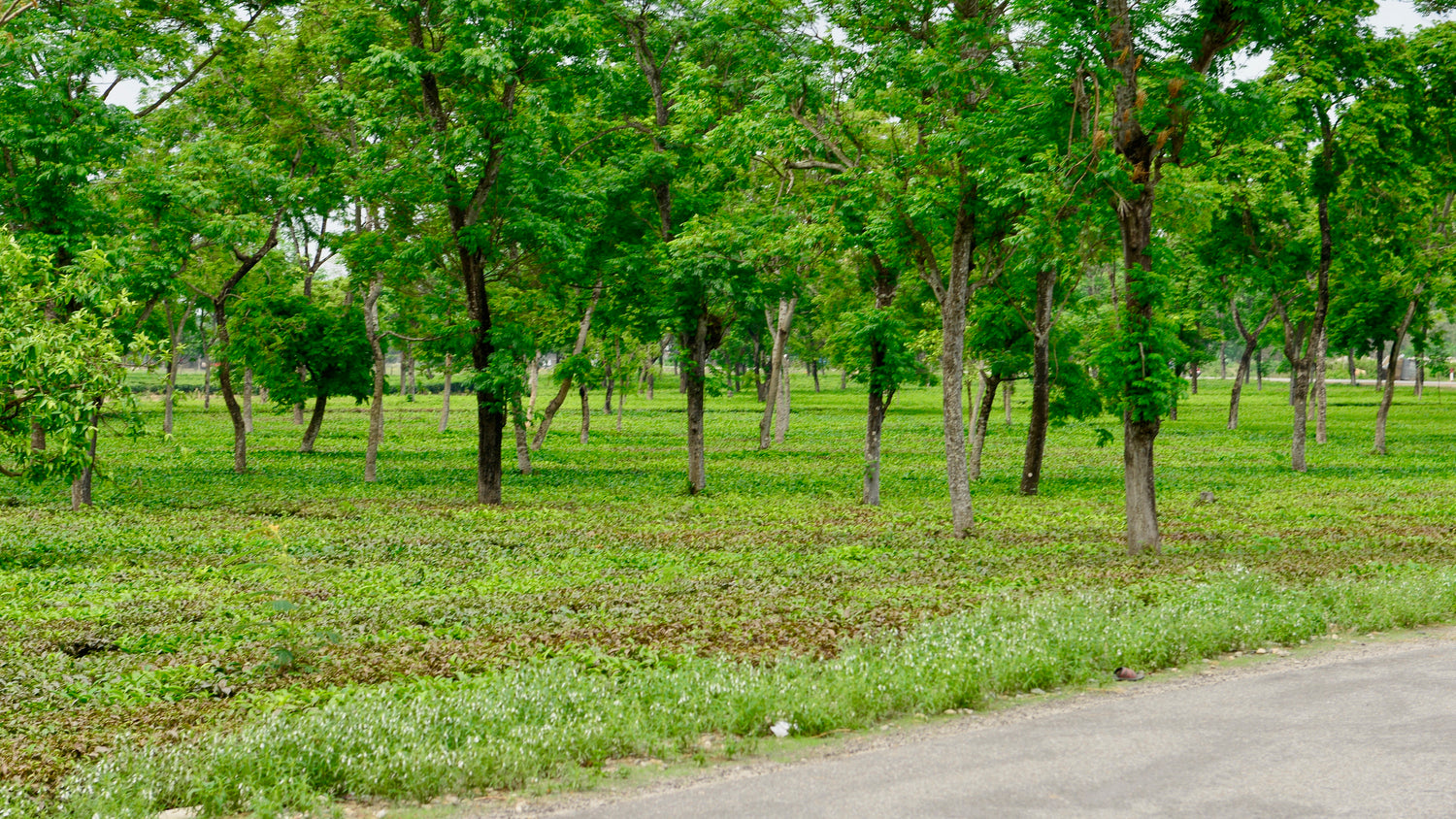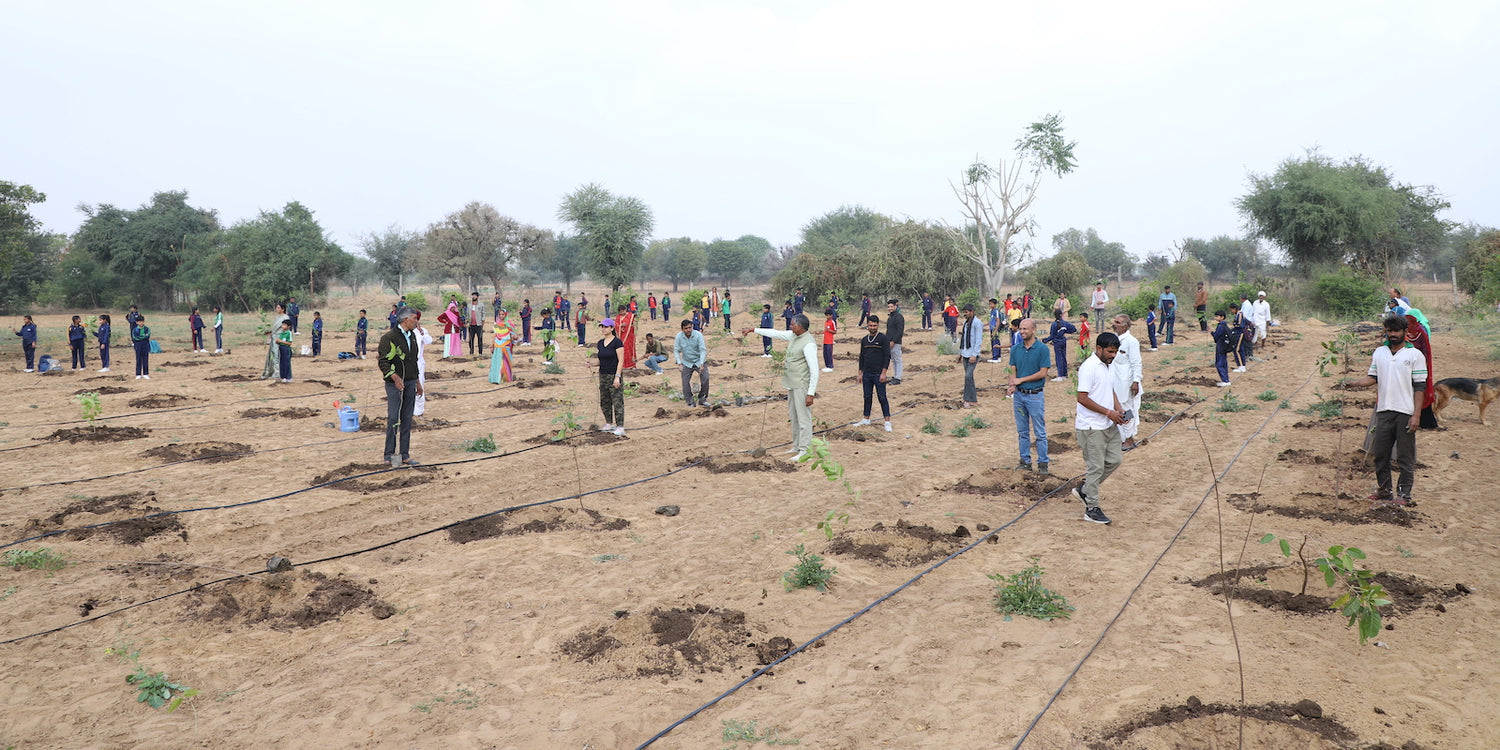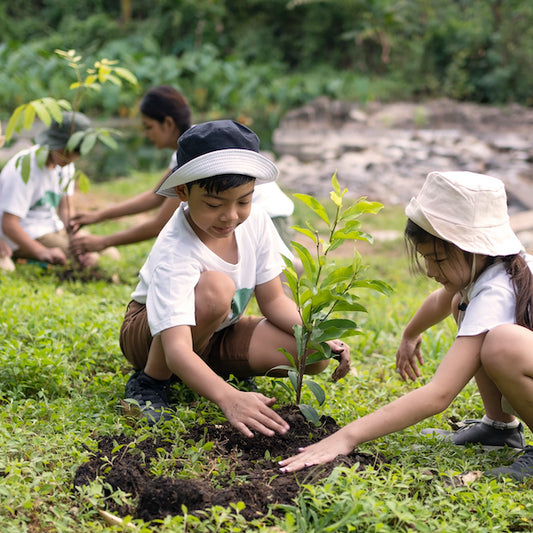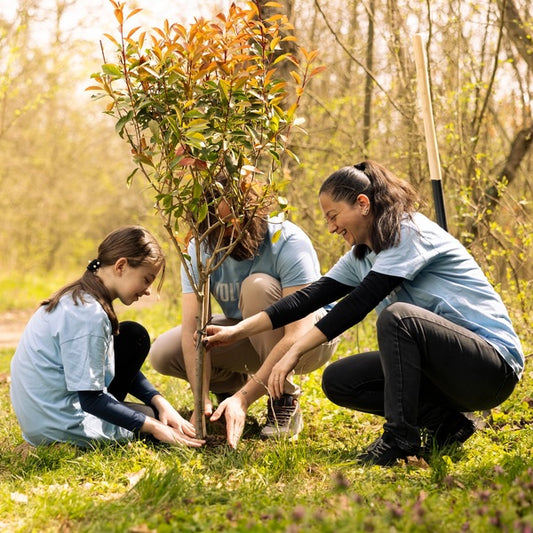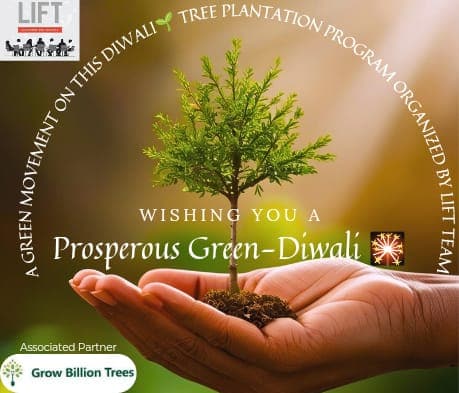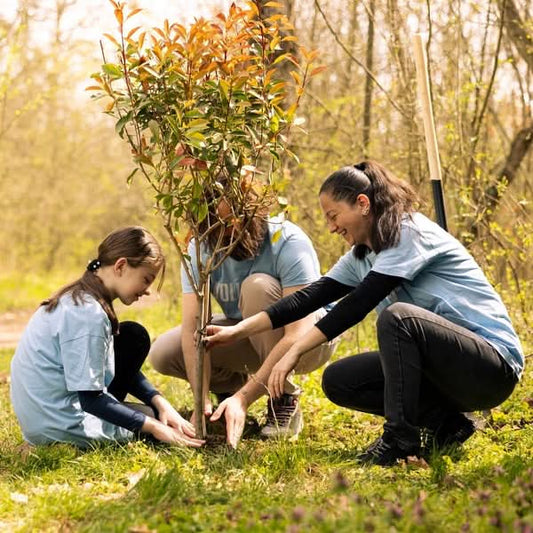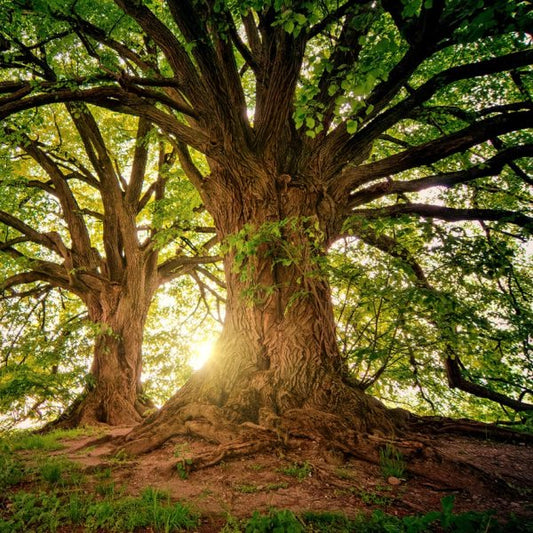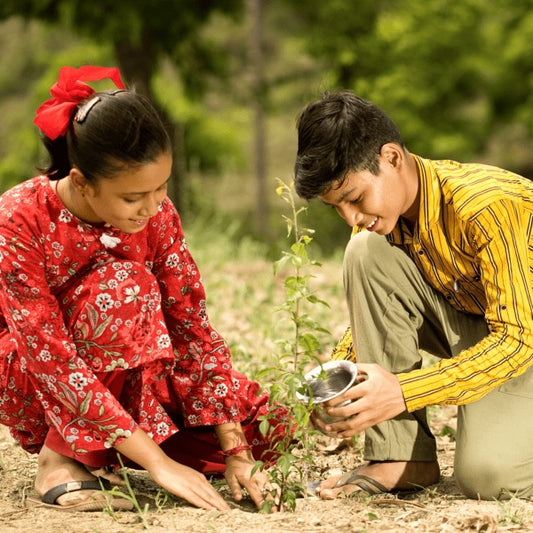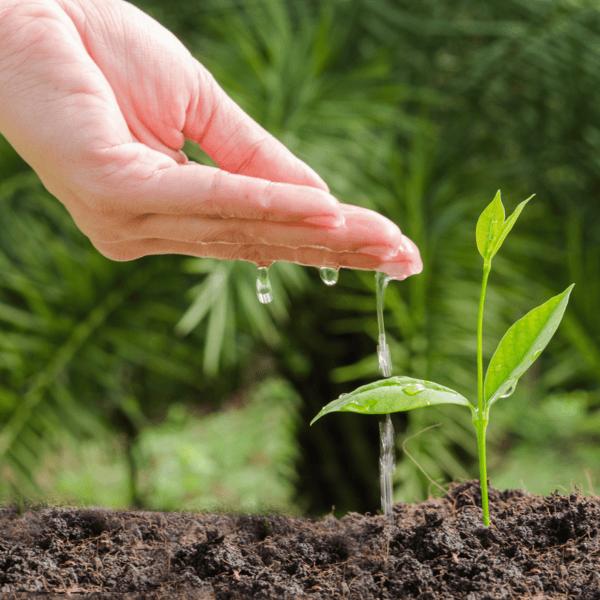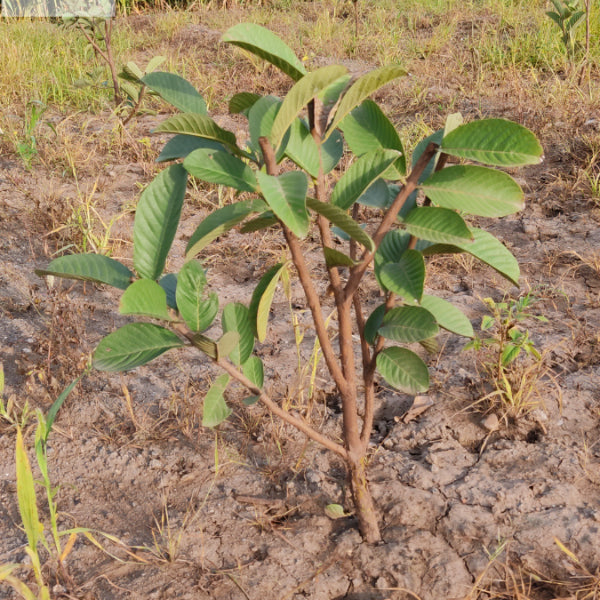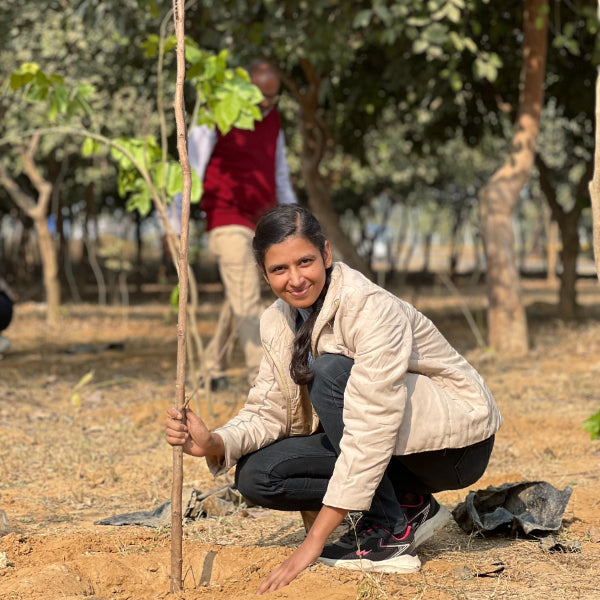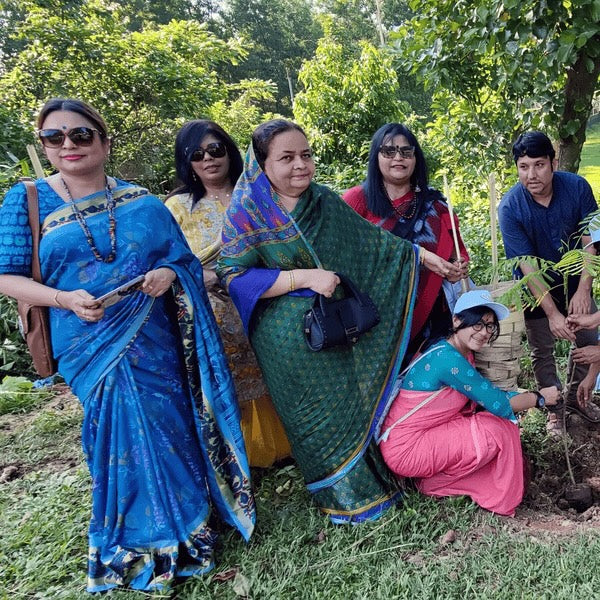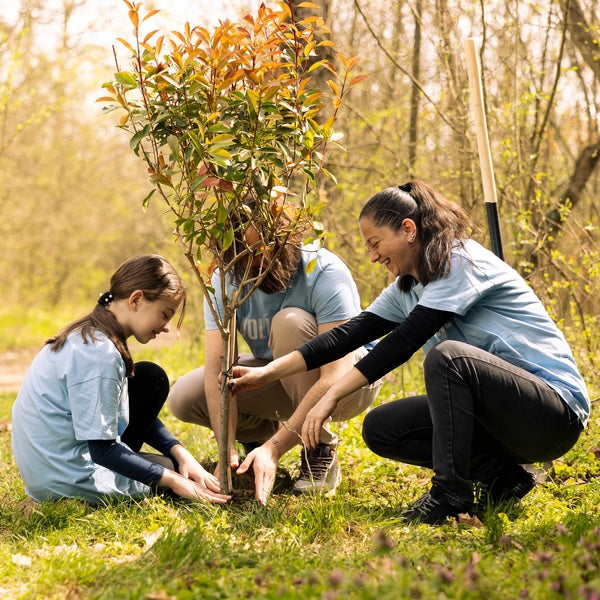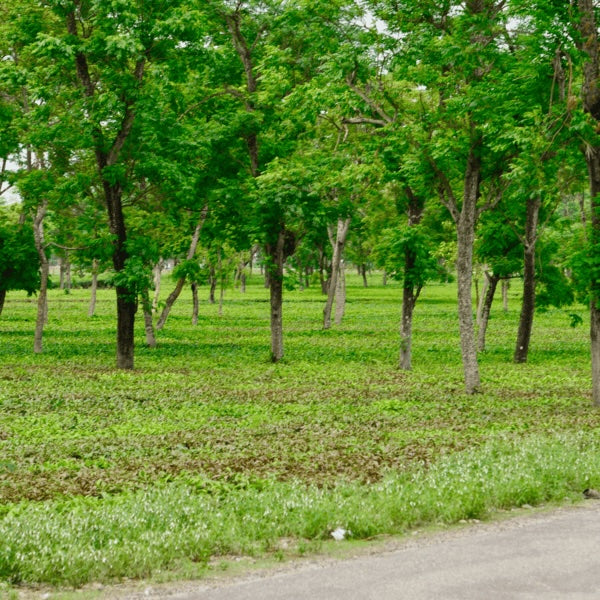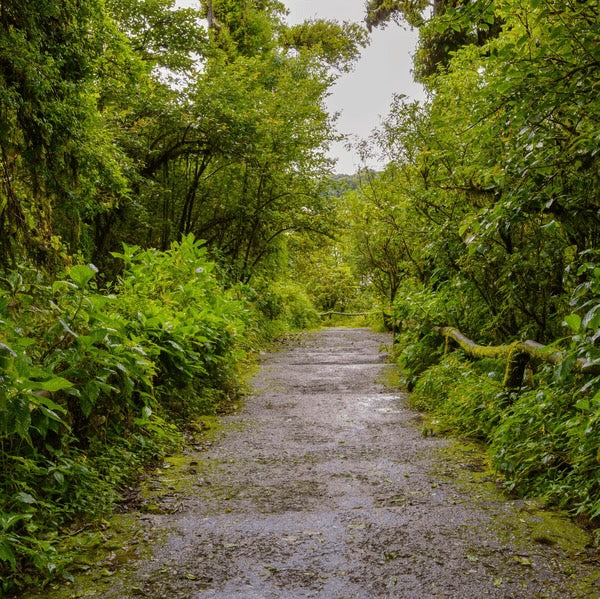Agroforestry in Odisha: Strengthening Tribal Resilience
Agroforestry in Odisha is a beacon of hope for tribal communities, blending agriculture and forestry to enhance resilience. 🌳 This innovative practice Read more
Connect with us
-
👥 Corporates
If you are looking for:
- 🌲 Tree Plantation Events
- 📊 CSR Projects
📧 corporate@growbilliontrees.com
📞 +91 9699723523
💬 +91 9325931304 WhatsApp (Only)
🕒 Mon - Sat | 10am - 7pm IST
-
🧩 Tree Plantation NGOs
If you are looking for:
- 💰 Financial Assistance
- 🤝 Operational Support
📧 support@growbilliontrees.com
📞 +91 9699723523
💬 +91 9325931304 WhatsApp (Only)
🕒 Mon - Sat | 10am - 7pm IST
-
🌼 Individuals
If you are looking for:
- 👥 Group Tree Plantation Drive
- 🌳 Bulk Tree Plantation
📞 +91 9699723523
💬 +91 9325931304 WhatsApp (Only)
🕒 Mon - Sat | 10am - 7pm IST
Trending
Trees for Corporates
Agroforestry in Odisha: Strengthening Tribal Resilience
Agroforestry in Odisha is a beacon of hope for tribal communities, blending agriculture and forestry to enhance resilience. 🌳 This innovative practice not only boosts food security but also strengthens the socio-economic fabric of tribal life.
Odisha, home to diverse tribal populations, faces challenges like climate change, soil degradation, and economic instability. Agroforestry offers a sustainable solution, integrating trees with crops and livestock. This method improves biodiversity, enhances soil health, and increases crop yields. 🌾
Historically, tribal communities in Odisha have relied on traditional farming methods. However, with changing climate patterns, these practices are becoming less viable. Agroforestry introduces a modern twist, allowing tribes to adapt while preserving their cultural heritage. 🌿
Scientific studies show that agroforestry can increase crop productivity by 20-50%. This is crucial for Odisha, where many families depend on agriculture for their livelihoods. By planting trees alongside crops, farmers can benefit from shade, improved soil moisture, and reduced erosion.
Fun fact: Trees can improve the microclimate of agricultural fields, leading to better growth conditions for crops. 🌞 This is particularly important in Odisha, where temperatures can soar during the summer months.
Moreover, agroforestry systems can provide additional income sources. Fruits, nuts, and timber from trees can be sold, diversifying income streams for tribal families. This economic resilience is vital in a region where many live below the poverty line.
Environmental impacts of agroforestry are profound. 🌍 Trees sequester carbon, helping combat climate change. In Odisha, where deforestation has been rampant, agroforestry can play a pivotal role in restoring ecosystems and enhancing biodiversity.
Organizations like Grow Billion Trees are at the forefront of promoting agroforestry across India, including Odisha. 🌱 Their mission is to plant billions of trees, creating sustainable landscapes that benefit both people and the planet.
Grow Billion Trees implements projects that educate tribal communities about agroforestry techniques. Workshops and training sessions empower farmers with knowledge on tree planting, crop management, and sustainable practices. This hands-on approach fosters community involvement and ownership. 🤝
One of their flagship projects in Odisha focuses on integrating indigenous tree species into farming systems. These species are well-adapted to local conditions, ensuring higher survival rates and better yields. 🌳
Additionally, Grow Billion Trees collaborates with local governments and NGOs to create policies that support agroforestry initiatives. By advocating for sustainable land use practices, they aim to create a favorable environment for tribal farmers. 📜
Community engagement is key to the success of these projects. Grow Billion Trees encourages local participation, ensuring that the voices of tribal communities are heard. This inclusive approach fosters trust and collaboration, essential for long-term sustainability.
As agroforestry gains traction in Odisha, success stories are emerging. Farmers who have adopted these practices report increased yields and improved livelihoods. 🌾 These positive outcomes inspire others to follow suit, creating a ripple effect of change.
Moreover, agroforestry contributes to food security. By diversifying crops and incorporating trees, families can ensure a steady supply of food throughout the year. This is especially important in a region prone to droughts and floods.
In conclusion, agroforestry in Odisha is not just a farming technique; it’s a pathway to resilience for tribal communities. 🌟 With the support of organizations like Grow Billion Trees, the future looks bright. Together, we can cultivate a sustainable and prosperous future for all.
Join the movement! Support agroforestry initiatives and help strengthen tribal resilience in Odisha. Every tree planted is a step towards a greener, more sustainable world. 🌍
Agroforestry Practices
Agroforestry practices in Odisha are like a well-rehearsed dance, where trees and crops twirl together in harmony. Imagine a farmer planting mango trees alongside paddy fields, creating a symphony of biodiversity. This not only enhances soil fertility but also provides shade for crops and a habitat for wildlife. The tribal communities, with their deep-rooted knowledge of the land, are the choreographers of this dance, ensuring that every step is in sync with nature. By adopting these practices, they are not just farming; they are nurturing an ecosystem that thrives on cooperation. So, next time you bite into a juicy mango, remember the intricate ballet of agroforestry that made it possible.
Tribal Livelihoods
In Odisha, tribal livelihoods are like a colorful tapestry woven with threads of tradition and innovation. Picture a tribal farmer who, instead of relying solely on monoculture, diversifies his income by integrating agroforestry. He grows medicinal plants alongside staple crops, creating a safety net for his family. This not only boosts his income but also preserves ancient knowledge about herbal remedies. The resilience of these communities shines through as they adapt to changing climates and market demands. By embracing agroforestry, they are not just surviving; they are thriving, proving that when it comes to livelihoods, variety is the spice of life.
Climate Resilience
Climate resilience in Odisha is akin to a superhero cape for tribal communities. With agroforestry, they are equipped to face the unpredictable weather patterns that climate change throws their way. By planting diverse species, they create a buffer against droughts and floods, ensuring that their crops have a fighting chance. It’s like having a backup plan for your favorite picnic spot—if it rains, you’ve got a cozy tree to shelter under. This adaptability not only secures food sources but also strengthens community bonds as they work together to protect their environment. In the face of climate challenges, Odisha’s tribes are not just surviving; they are thriving with style.
Biodiversity Conservation
Biodiversity conservation in Odisha is like hosting a grand party where every species is invited. Agroforestry plays the role of the perfect host, creating an environment where plants, animals, and humans coexist in harmony. By planting a variety of trees and crops, tribal communities are not just enhancing their own livelihoods; they are also protecting the rich tapestry of life that surrounds them. This vibrant ecosystem supports pollinators, birds, and beneficial insects, all while providing food and resources for the community. So, let’s raise a toast to the biodiversity party in Odisha, where every leaf and creature contributes to the celebration of life.
Sustainable Agriculture
Sustainable agriculture in Odisha is the cool kid on the block, and agroforestry is its best friend. Together, they promote practices that are not just good for the environment but also for the farmers’ wallets. By integrating trees into their farming systems, tribal communities can reduce soil erosion, improve water retention, and increase crop yields. It’s like having a multi-tool that does everything from opening bottles to fixing bikes. This approach ensures that the land remains productive for generations to come, allowing farmers to pass down their knowledge and resources to their children. In the world of agriculture, sustainability is the name of the game, and Odisha is playing it like a pro.
Economic Empowerment
Economic empowerment in Odisha is like finding a treasure chest buried beneath the soil, and agroforestry is the map that leads to it. By diversifying their crops and incorporating trees, tribal farmers can tap into new markets and increase their income. Imagine a farmer selling organic fruits, nuts, and timber—all thanks to the agroforestry system he has established. This not only boosts individual incomes but also strengthens the entire community’s economy. As they invest in education and health, the ripple effects of this empowerment can be felt far and wide. In Odisha, economic empowerment is not just a dream; it’s a reality that grows alongside the trees.
Food Security
Food security in Odisha is like a well-stocked pantry, and agroforestry is the chef that keeps it full. By growing a variety of crops and integrating trees, tribal communities can ensure a steady supply of food throughout the year. This diversity acts as a buffer against crop failures caused by pests or climate change. It’s like having a backup dish ready when the main course doesn’t turn out as planned. With agroforestry, families can enjoy a balanced diet rich in nutrients, while also having the means to sell surplus produce in local markets. In the quest for food security, Odisha’s tribes are cooking up a storm of resilience and abundance.
Community Engagement
Community engagement in Odisha is like a vibrant festival, where everyone comes together to celebrate agroforestry. Tribal communities are not just passive recipients of knowledge; they are active participants in shaping their agricultural practices. Workshops, meetings, and collaborative projects foster a sense of ownership and pride in their land. It’s like a potluck dinner where everyone brings their best dish to share. This collective effort not only strengthens social ties but also enhances the effectiveness of agroforestry initiatives. In Odisha, community engagement is the secret ingredient that makes the recipe for resilience truly delicious.
You may like
Corporate Plantations
FAQ
What is Agroforestry in Odisha?
Agroforestry in Odisha is a sustainable land-use system that integrates trees, crops, and livestock to enhance productivity and resilience. It’s like a harmonious family reunion where everyone contributes to the feast! This practice not only boosts agricultural yields but also improves soil health and biodiversity, making it a win-win for farmers and the environment.
How does Agroforestry strengthen tribal resilience?
Agroforestry strengthens tribal resilience by diversifying income sources and enhancing food security. When tribal communities adopt agroforestry, they’re not just planting trees; they’re planting the seeds of stability. This system helps them adapt to climate change, reduces dependency on single crops, and provides a buffer against economic shocks.
What are the benefits of Agroforestry for farmers in Odisha?
Farmers in Odisha reap a cornucopia of benefits from agroforestry! They enjoy improved soil fertility, increased crop yields, and a steady supply of timber and non-timber products. Plus, it’s a great way to combat climate change while keeping their wallets happy. Who knew saving the planet could be so profitable
How can Grow Billion Trees help in promoting Agroforestry?
At Grow Billion Trees, we’re all about planting the future! We provide resources, training, and support to farmers and tribal communities in Odisha to adopt agroforestry practices. Our mission is to empower them with knowledge and tools, turning their land into a thriving ecosystem that benefits both people and nature.
What types of trees are suitable for Agroforestry in Odisha?
In Odisha, the best tree companions for agroforestry include species like Teak, Mahogany, and Neem. These trees are not just pretty faces; they offer shade, improve soil quality, and provide valuable timber. It’s like having a multi-talented friend who can do it all!
Is Agroforestry a viable solution for climate change?
Absolutely! Agroforestry is like nature’s superhero in the fight against climate change. By sequestering carbon, improving soil health, and enhancing biodiversity, it plays a crucial role in mitigating climate impacts. Plus, it helps communities adapt to changing weather patterns, making it a double whammy for resilience!
How can individuals contribute to Agroforestry initiatives in Odisha?
Individuals can contribute by supporting organizations like Grow Billion Trees, volunteering for tree planting events, or even adopting agroforestry practices in their own backyards. Every little effort counts! It’s like being part of a massive tree-hugging club, and who wouldn’t want to join that
What is the future of Agroforestry in Odisha?
The future of agroforestry in Odisha looks bright and green! With increasing awareness and support from organizations like Grow Billion Trees, more farmers are likely to adopt these practices. This shift will not only enhance tribal resilience but also contribute to a sustainable and eco-friendly future for the region.

